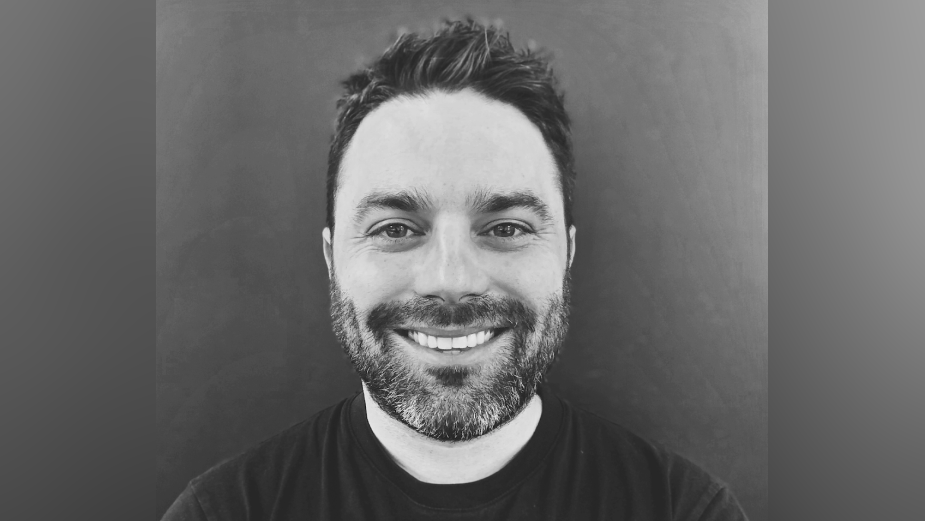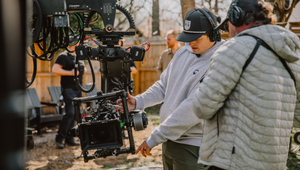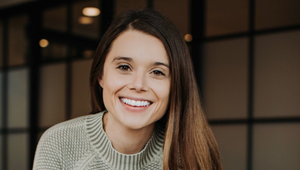
Bobby Jacques on Goosebumps from the U-CRANE and Deepfake Mysteries

Nashville-based production company Gear Seven pushes the limits of creativity, technology and possibility - and innovates like it’s nobody's business. Alongside a non-exclusive roster of directors and production capabilities, Gear Seven offers hardware, LED volume studios and virtual production via its sister companies Shift Dynamics and Arc Studios.
Gear Seven has teamed up with LBB to speak with agency production leaders about innovations in production technology and how it is revolutionising commercial production. This series investigates the importance of education in this area for agencies and brands and offers a fun opportunity to nerd out on all things technical, while sharing memories of their most awe-inspiring and unforgettable moments on set.
For the first interview in the series, LBB’s Ben Conway speaks with VMLY&R’s group executive producer, Bobby Jacques - someone with extensive experience in producing commercial content with a variety of production technologies, including virtual production, projection mapping, car-mounted cameras and much more. Today, he shares his predictions on the next big innovations to come, memories of using his favourite production tech and how agencies can educate brands on new techniques and processes.
LBB> Throughout your career – what was the most exciting or groundbreaking piece of ‘new’ kit or technology that was introduced to you and why?
Bobby> I’m going to go with a more traditional answer here - since the rest of this interview is chock-full of talk about new, cutting-edge tech - and nerd out on one of my favourite cameras of all time: the Phantom. I’m sure many of you remember some of those early demos. A bullet smashing through a water balloon, and you couldn’t take your eyes off it. We take these HD high-speed cameras for granted now, but when they first came out, they were just so cool. So much more became possible, both creatively and budgetarily, once these types of cameras became more accessible.
LBB> And what are the technologies that you have your eye on now that either are having a big impact on how production is done - or have the potential to change things in a big way?
Bobby> For me, without question, it’s deepfake technology. The recent Kendrick Lamar music video blew me away. Any tech that involves AI interests me in both its potential in the ad space and the cultural and sociological hurdles it will face in the very near future.
The negatives are obvious. Disinformation and misinformation are, as we all know, already major issues we all face - especially in the geopolitical landscape. The disinformation and propagandising potential with deepfake is a scary thing to think about. Not to mention the culture of suspicion and doubt that we’ll see become more and more prevalent as this type of technology becomes more accessible and streamlined. What can we believe, or should we believe?
As for some of the positives, I do think that - used wisely - deepfake will open many doors to help with some of the production challenges we face today. One example: Every year we see a rise in the quantity of content our clients need. Higher quantity and the need for more targeted content, coupled with shrinking production dollars has been a real challenge. Deepfake will allow more meaningful ads to be created at scale. Any celebrity or influencer that a client partners with, given the right permissions, will be scalable with very little in-camera production necessary. It’ll be interesting to see what the future of celebrity contracts has in store.
Still, all the negative ways deepfake can be used make the potential in the ad space extremely tricky for me on a personal and ethical level. But pushing the boundaries of what is OK and not OK is where great ideas are born, and I’m excited about the possibilities and hopeful that it can be regulated in some way.
LBB> What piece of kit (big or small and mighty) still makes you feel in awe when on set?
Bobby> There’s something about a U-CRANE car mount (formerly Russian Arm) whizzing past a high-action shot that still gives me goosebumps on set. Motion control rigs are a close second, but they can be so temperamental at times and turn into a major time suck on set.
LBB> Can you talk us through one or two of the most exciting recent productions that you’ve been involved in that you think had a really interesting innovation or technological aspect to them?
Bobby> Just last month we launched ’I Will Always Be Me’, a tech-based initiative meant to help people suffering with motor neurone disease. If you don’t know, MND (ALS in the US) is a devastating and terminal disease. But before it takes your life, it takes your voice. Voice banking can help these people preserve their voice by creating a synthetic version. The problem was, the process could take months to complete. And it was very cold and solitary.
We partnered with New York Times bestselling author Jill Twiss and award-winning illustrator Nicholas Stevenson to create a meaningful digital book to help people living with this tragic disease more easily bank their voice.
The book itself was written to be read aloud to friends and loved ones, so MND patients could gently explain to them what they were going to be facing. And all the sounds and phrases needed to accurately recreate a voice were contained in the text. Better yet, the book only takes about 20 minutes to read. And the final product is their actual voice — a vast improvement from the way it used to be. By integrating voice banking technology with the difficult task of explaining the disease to loved ones, we humanised the experience and encouraged individuals to act earlier in their diagnosis. Tech can often feel so sterile - so when I can be a part of something that brings humanity into the fold, it makes me happy.
LBB> A similar question, but what is the time in your career that you’ve been observing a production and been particularly in awe of what the production team was pulling off?
Bobby> A few years ago, I produced a big package of spots where the concept revolved around projection mapping onto objects on a large stage. We had to create most of the VFX upfront and translate them into projections that matched the shape and movement of the objects we were projecting onto. The projections were choreographed and timed to match the action, so it was almost like shooting a live play while projecting onto the stage. Projection mapping wasn’t ground-breaking, but the way we had to chart and lay out the projections in real time was a big challenge that took a lot more math than anyone expected.
I remember at one point being on the stage (which had flooded the night before from a broken water pipe) with an Oscar-winning director, celebrity talent, and a live cow mapped in projections, standing in front of a life-sized foam plane, also with projections, and thinking wow, I can’t believe we’re pulling this off.
LBB> Virtual production is growing in popularity in film and TV (e.g. Loki and The Mandalorian). What are your thoughts about its potential in the advertising space?
Bobby> There’s huge potential in the advertising space. Just in the past six months, my team has produced three spots on virtual stages, one at NantStudios in LA and the others at Ten-Dots Studio in Bulgaria.
It’s important to educate clients and the creative team on the process upfront, as it’s very different from a traditional production. And while there are many mishaps that can happen (There are failures that will occur. We count on it and build in the time.), overall it has many pros. I think the biggest pro is in helping clients better imagine and agree to the VFX environment ahead of time, especially the more abstract.
I’ve often found that on big VFX jobs we run into more problems getting on the same page with client partners when the visuals are imagined and abstract. Everyone knows what a CG giraffe looks like, but the opening to a portal to another dimension, for instance, will have many subjective opinions as to what it should look like - because it doesn’t exist to our knowledge. Everyone has their own opinion. A virtual production approach can help lock in some of these visuals sooner and more easily allow the clients to imagine what the final product will look like while on set. When a client partner can better imagine the visuals while shooting, it usually makes it a bit easier to sell through cooler, more cutting-edge VFX.
From a filmmaking perspective, depending on the pre-production lead time and the amount of in the moment flexibility you have, shooting on a virtual stage can open a number of possibilities not available to us when shooting on a practical set. Real-time technology, with a real-time feedback loop, is one of the most ground-breaking developments in film craft in a long time, and I’m excited to be a part of more of these productions in the future.
LBB> Is this different workflow something you feel agencies and brands need to educate themselves on or does it lie with the production company?
Bobby> Definitely. Because you’re completely reimagining the VFX pipeline. You’re working on a lot of your visuals weeks before you shoot. The virtual stage will usually need the final locked visuals about a week before shooting begins, so it puts a real stressor to get everyone on the same page early — which is a good thing!
I think it’s more the agency’s responsibility than it is the production company’s since it’s more about educating the client on the process and expectations and deadlines, rather than the ins and outs of the actual tech. Even the traditional production process can be a mystery to some client partners. Create a welcoming, transparent environment where there are no dumb questions, and you can help your clients understand this process from the beginning. It’s new for all of us, after all.
Just make sure you build more time into your schedule between awards and shoot!
LBB> With so many platforms to produce for, what’s your preference - to maximise assets across platforms or to produce content that’s more tailored to each content - or some sort of balance? What sort of conversations do you tend to have about this sort of thing?
Bobby> It really depends on the campaign or project, as well as the budget. Obviously, in an ideal world, we’d all like to tailor each piece of content to the platform it will live on. And we do that with lots of our social work where the creative calls for a specific and tailored production based on where it will live. But many times, we also find that our clients are looking to get more content out of their larger campaigns and thereby use footage from the main piece itself and footage captured on set as an extra - in more of a behind the scenes fashion.
It's never ideal, in my opinion, to do it this way. I would always opt to capture content in a way that benefits the idea first and foremost, not just checking a budget or asset delivery box. But the reality is that sometimes we need to compromise a bit to get everything that our clients need in the can. So I’ve found it best to pick and choose my battles. The piece of great creative that needs its own tailored production - I’ll fight for that. The pieces that can squeeze into a larger shoot and lean more into quantity, sometimes that’s necessary.
LBB> Quite often, production involves trying to solve a problem that’s never been attempted before - and that can mean hacking existing technology or trying to find new technologies. When you get a project that has such technological challenges, how do you and your team like to approach them?
Bobby> I’ll keep this short and sweet. Trust the experts! We’re so lucky to have such amazing production partners at our fingertips in advertising. It’s all about finding the right partner based on their work and on trust and putting the faith in them to lead you to the finish line.















